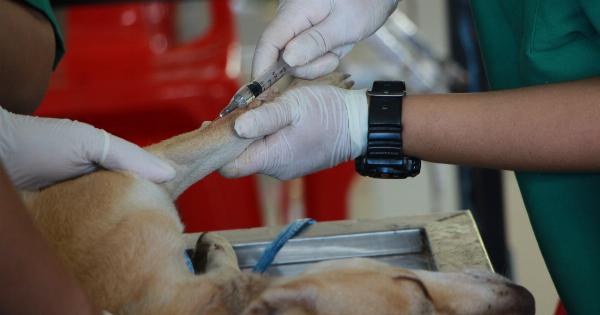Health insurance is an essential component of financial stability and security for individuals and families. It helps cover the costs of medical expenses, including preventive care, emergency treatment, and ongoing healthcare needs.
While health insurance primarily focuses on human health, it is worth exploring how health insurance may come into play in the unfortunate event of a dog attack.
What is Health Insurance?
Health insurance is a contract between an individual and an insurance company that provides financial protection and coverage for medical expenses.
Under health insurance plans, policyholders pay regular premiums, typically on a monthly basis, in exchange for the assurance of financial assistance in case of a medical emergency or illness.
Types of Health Insurance Coverage
There are various types of health insurance coverage available, including:.
1. Employer-provided Health Insurance:
Many individuals receive health insurance coverage through their employers. This type of insurance is often known as employer-provided or employer-sponsored health insurance.
The employer negotiates group rates and offers a selection of plans to their employees.
2. Government-funded Health Insurance:
Government-funded health insurance programs, such as Medicare and Medicaid, aim to provide coverage for specific populations.
Medicare primarily serves senior citizens aged 65 and older, while Medicaid offers assistance to low-income individuals and families.
3. Individual Health Insurance Plans:
Individual health insurance plans are policies purchased directly by individuals or families from insurance companies.
These plans allow individuals to customize their coverage based on their specific needs and often provide more flexibility in terms of choice of healthcare providers.
4. Health Insurance Exchange Plans:
Health insurance exchanges, also known as marketplaces, were established under the Affordable Care Act (ACA) to provide individuals and small businesses with access to affordable health insurance options.
These exchanges facilitate the purchase of health insurance plans from private insurers.
Health Insurance Coverage for Dog Attacks
When it comes to dog attacks, health insurance coverage may come into play in a couple of different scenarios:.
1. Victim’s Health Insurance:
If you are the victim of a dog attack and have health insurance, your policy may cover the medical expenses resulting from the incident.
This could include emergency room visits, surgical procedures, medications, follow-up care, and even therapy or counseling, depending on the extent of the injuries and the provisions of your specific policy.
2. Dog Owner’s Liability Insurance:
In many cases, the dog owner’s homeowner’s insurance or renter’s insurance may provide coverage for dog bites or attacks.
Liability coverage within these policies typically includes medical payments for injuries caused by the insured’s dog. However, it is important to note that certain dog breeds may be excluded from coverage due to their perceived higher risk.
Filing a Health Insurance Claim for Dog Attacks
If you find yourself in the unfortunate situation of being a victim of a dog attack, here are steps to follow when filing a health insurance claim:.
1. Seek Medical Attention:
Immediately after a dog attack, your health and safety should be a top priority. Seek medical attention promptly to assess and treat your injuries. If necessary, call emergency services or go to the nearest emergency room.
2. Document the Incident:
Collect as much information as possible about the dog attack incident. This includes gathering contact information from the dog owner, if known, and any witnesses present at the time of the incident.
Take photographs of your injuries and the location where the attack occurred. The more evidence you have, the stronger your claim may be.
3. Contact Your Health Insurance Provider:
Reach out to your health insurance provider as soon as possible to notify them of the dog attack and discuss the necessary steps to file a claim. They will guide you through the process and provide any specific forms or documentation required.
4. Coordinate with Other Insurance Providers:
If the dog owner has liability insurance that may cover the incident, contact their insurance company and inform them of the situation. It is essential to ensure that all potential coverage options are explored to minimize out-of-pocket expenses.
5. Follow the Recommended Treatment:
Adhere to the treatment plan prescribed by your healthcare provider. This includes attending follow-up appointments, taking medications as directed, and participating in any necessary rehabilitation or therapy.
Compliance with the recommended treatment can strengthen your case and supports the need for coverage of related healthcare expenses.
6. Keep Detailed Records:
Maintain a thorough record of all medical expenses, including bills, receipts, and any other relevant documentation. This documentation will be crucial when filing your health insurance claim and seeking reimbursement for out-of-pocket costs.
7. Understand Your Policy’s Limitations:
Review your health insurance policy to understand the specific coverage limitations, deductibles, co-pays, and any other factors that may impact your claim.
Some policies may have exclusions for certain types of injuries caused by animals or specific dog breeds. Being aware of these limitations will help you manage your expectations.
Preventing Dog Attacks
While it is essential to be prepared for the unexpected, including dog attacks, it is equally important to take preventive measures to minimize the risk of such incidents. Here are some tips to help prevent dog attacks:.
1. Responsible Ownership:
Dog owners should be responsible and properly train and socialize their dogs.
This includes ensuring their pets are familiar with basic commands, such as “sit” and “stay,” and exposing them to various social environments from a young age.
2. Education and Awareness:
Community education programs can promote responsible dog ownership and provide awareness about the importance of proper training and socialization.
Encouraging dog owners to participate in training classes or obedience programs can make a significant difference.
3. Supervision:
Always supervise interactions between young children and dogs. Teach children how to approach and interact with dogs properly, emphasizing the importance of gentle behavior and allowing dogs their personal space.
4. Avoidance Techniques:
If you encounter an unfamiliar dog, it is crucial to avoid aggressive or confrontational behavior. Never approach a stray dog, and if a dog appears agitated or aggressive, maintain a safe distance.
5. Reporting Potential Issues:
If you notice a dog behaving aggressively or exhibiting signs of neglect or abuse, report the situation to the appropriate local authorities or animal control agencies.
Early intervention can prevent future incidents and ensure the safety of both dogs and the community.
Conclusion
Understanding health insurance coverage in the context of dog attacks is important for both victims and dog owners.
Victims can rely on their health insurance policies, as well as potential liability coverage from the dog owner’s insurance, to help cover medical expenses resulting from an attack. Dog owners, on the other hand, should be responsible and take preventive measures to minimize the risk of their dogs causing harm to others.
By fostering a culture of responsible ownership and awareness, we can work towards reducing the incidence of dog attacks and ensuring the well-being of both humans and animals in our communities.





























